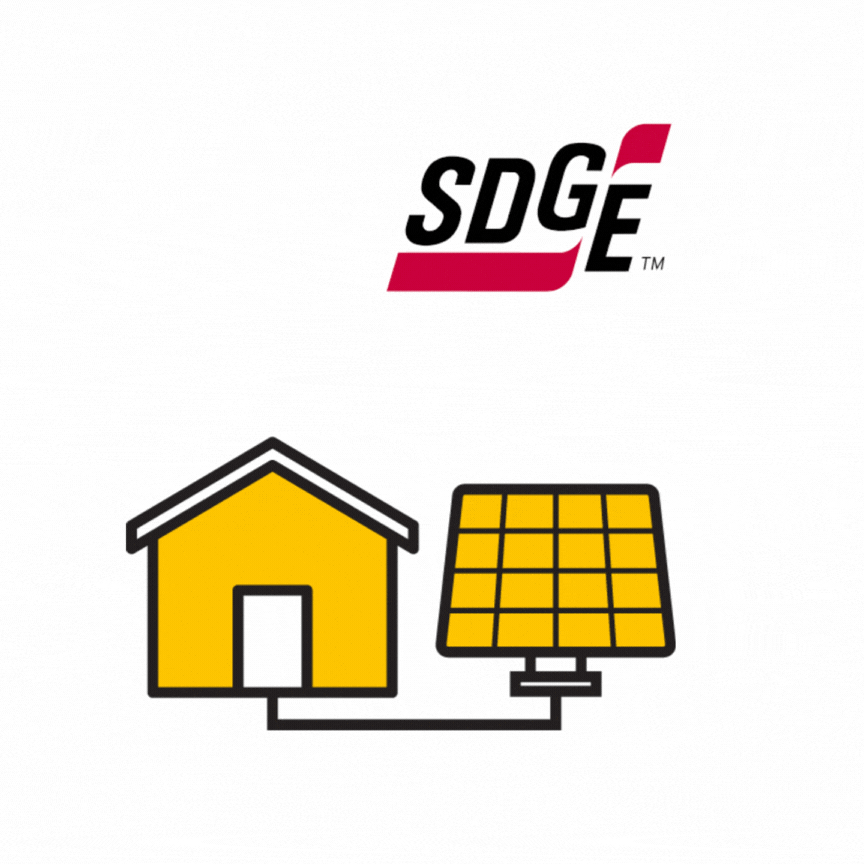How does net metering work at San Diego Gas & Electric ( SDG&E)?
San Diego Gas & Electric’s net metering program allows homeowners with solar panel systems connected to the grid to get credit for excess solar electricity.
If homeowners generate more energy than they use, SDG&E will give them credit and put the power on the grid for everyone else. At night or on a cloudy day, if your solar panel system can’t produce all the electricity your household needs, SDG&E will apply the credits to the energy you buy from them.
Also, if you overproduce for the year, the utility will pay you the wholesale price. While you can get money back, it would cost you money to get that money. For example, if you get $5, you need to spend $9 to make that $5 with excess power.
To be eligible for the NEM program, your solar panel system must comply with the rules and regulations for connecting customer-owned generation to SDG&E’s grid.
Where can I get net metering from SDG&E?
Net metering is available throughout San Diego Gas & Electric’s service territory, including San Diego County and southern Orange County.
What are SDG&E’s net metering rates and prices?
New customers currently pay between $0.22 and $0.50 per kWh. But this varies depending on the month and time of day. San Diego Gas & Electric’s net metering is straightforward. You receive a credit on your bill for the total retail value of each kWh you feedback to the grid. (e.g., the rate you pay for utility-generated kWh).
Is SDG&E’s net metering California’s best?
SDG&E’s net metering program is structured similarly to the state’s two largest utilities, Pacific Gas & Electric and Southern California Edison. The net metering program’s economics will be very similar for these three utilities.
Other California electric utilities, such as the Los Angeles Department of Water and Power, have simpler net metering policies. Their customers with the solar system are not required to enroll in time-of-use (TOU) rates.
Because SDG&E’s NEM 2.0 program uses TOU rates, solar homeowners may only sometimes get the most out of their solar electricity. Usually, grid electricity during the early to mid-afternoon hours is less expensive. So, solar electricity sent back to the grid will be worth less, according to the lower TOU rate at that time.

What will become of my unused SDG&E net metering bill credits?
Suppose you install a solar panel system that is sized to meet your electricity needs for the entire year. In that case, your solar panels will produce more electricity than you need in some months and less electricity in others.
When your panels generate more energy than you can use in a month, you will receive bill credits on your SDG&E bill that you can apply to in the coming months. If your panels generate more electricity than you use in a year, you will be credited for the extra kilowatt-hours at the wholesale compensation price.
Is there a solar incentive program offered by San Diego Gas & Electric?
SDG & E only provides solar incentives to some homeowners. The California Solar Initiative, on the other hand, has two rebate programs for low-income households in SDG&E’s service territory: Single-Family Affordable Solar Housing (SASH) and Muti-Family Affordable Solar Housing (MASH). You can learn more about these two rebate programs when you click here.
Where to start with your solar journey
Net metering can help with high electricity costs, and the best part is that solar is less expensive than electricity. If you are considering going solar and need help understanding solar panels, how net metering works, and what is the best option to save more, DroneQuote is here for you.
DroneQuote has solar experts that can walk you through the different installer quotes and options. We will design a system that meets your needs and get the most value from the system. Click here to get started.
